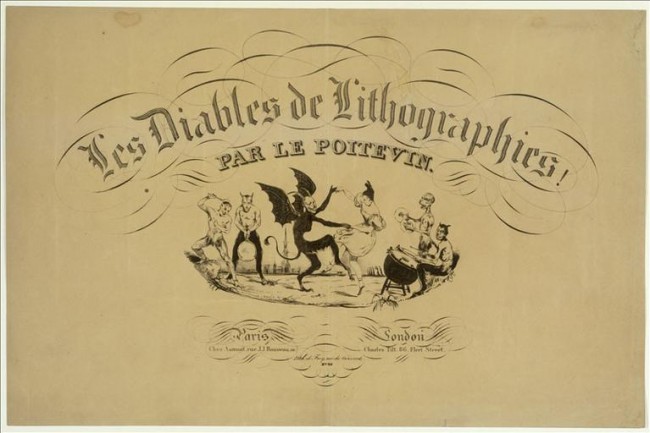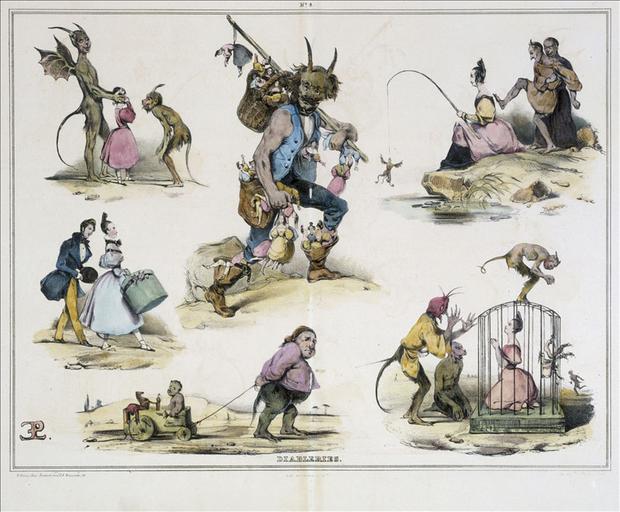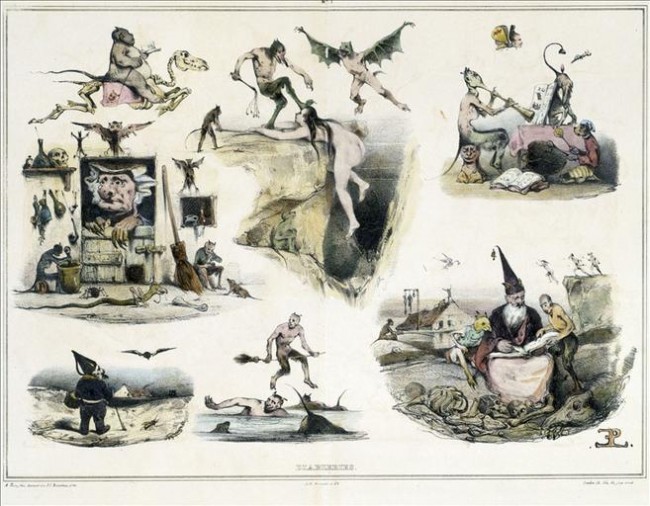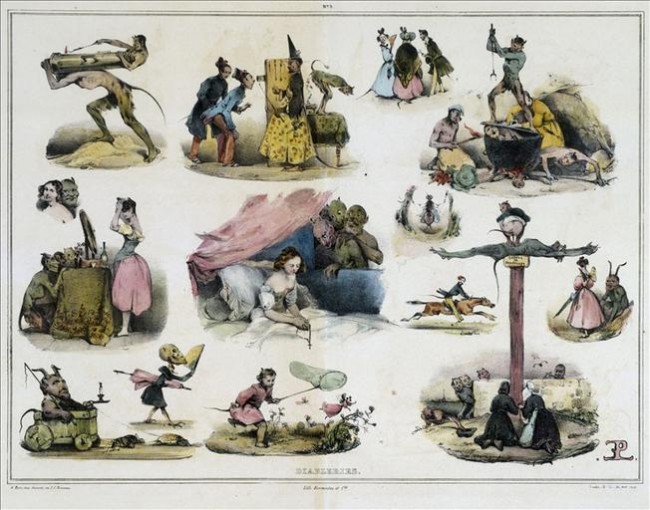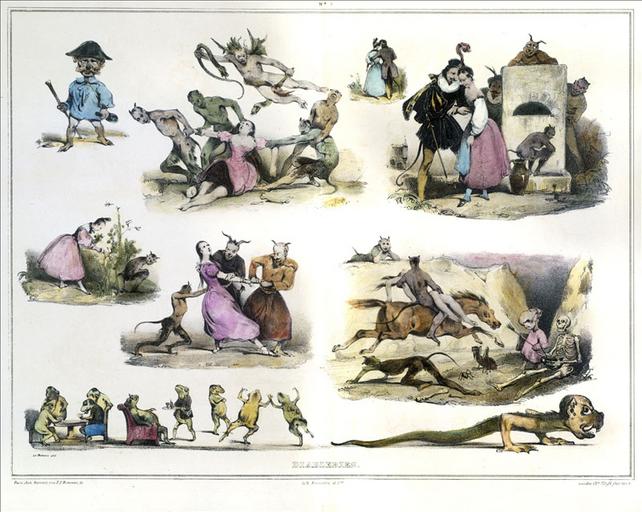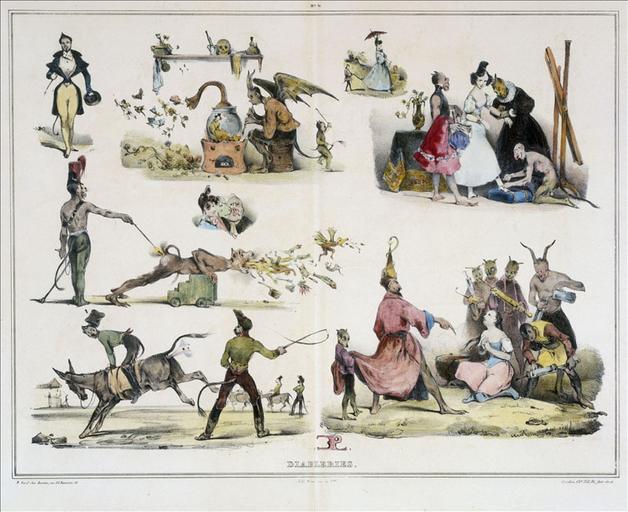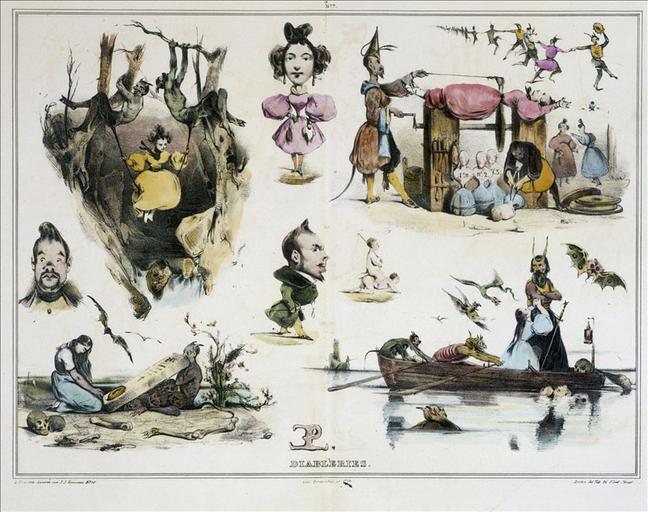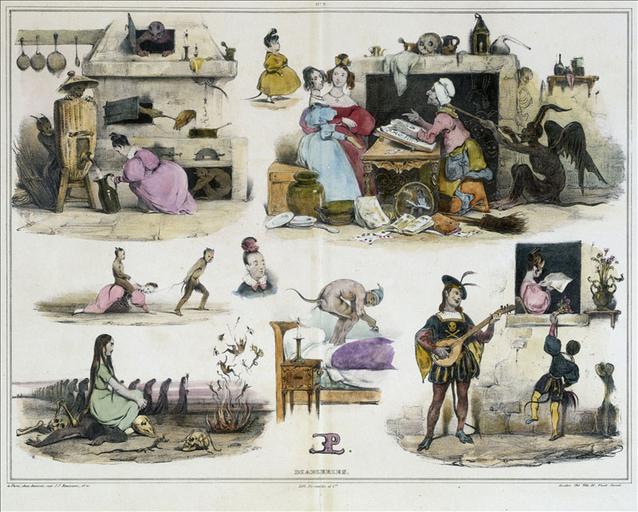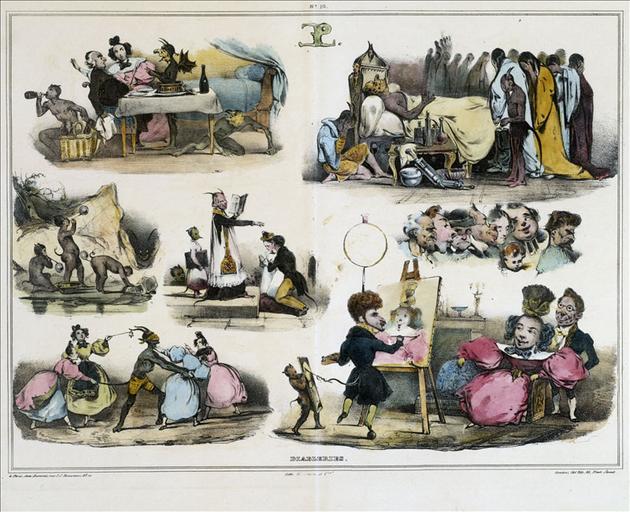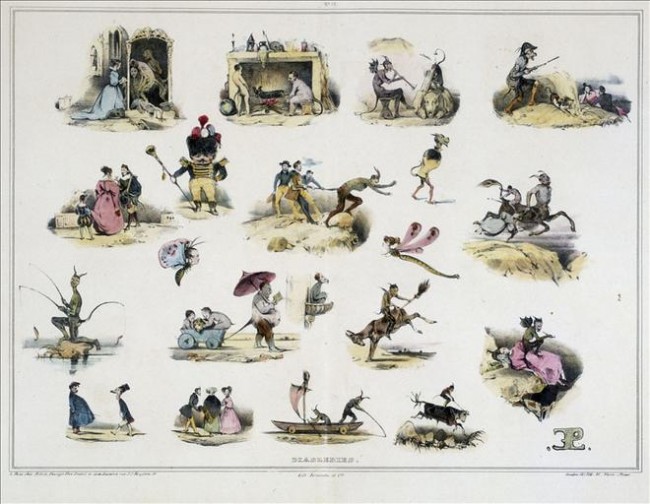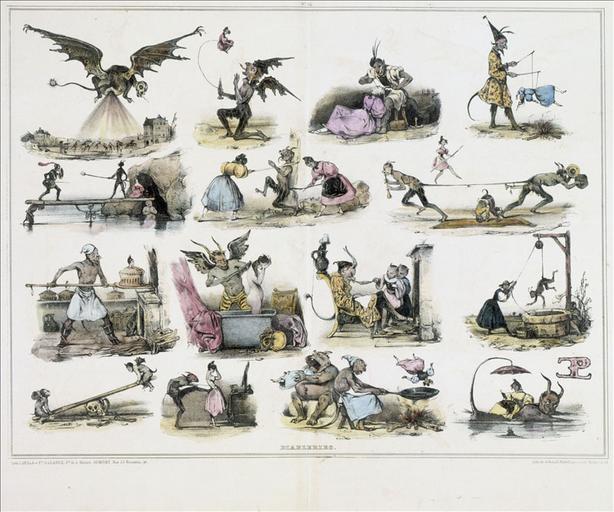Impish devils dance, make merry, carry off young maidens, engage in scatological activities, make mischief, toy with men and women. and generally have a hell of a time as infernal rascals frolicking with diabolical glee in Les Diables de Lithographies by Eugène Modeste Edmond Le Poitevin. Published in Paris, 1832, it is the most famous of all works, paint or print, by Le Poitevin (1806-1870), a French painter and lithographer. His “Devilries” established a genre in the wake of the Romantic school’s Mephistopheles and Faust, from scenes to fright to scenes that, as here, delight and amuse, Satan a giant buff horned paysan overflowing with specimens for his torment-zoo.
The album, co-published in Paris by chez Aumont and in London by Charles Tilt, contains eighty illustrations on twelve black and white numbered lithographed plates, with two supplemental plates (Petits sujets des diableries manquent le plus souvent, nos. 19 and 26: Paris / London: chez Aubert / Charles Tilt, 1832) containing thirty-five illustrations; a total of fourteen plates with 115 illustrations.
In 1832 France was in turmoil. The idealism of republicans, which peaked during the July Revolution of 1830 when Charles X abdicated and Louis Philippe ascended to the new constitutional monarchy, had been shattered. Subsequent events led them to believe that the blood spilled in 1830 had been for naught. Food shortages and an outbreak of cholera that claimed over 18,000 lives in Paris alone added to the general discontent. Bonapartists bitterly lamented the loss of empire. Supporters of the former Bourbon dynasty were angry that Louis Philippe wasn’t a Bourbon. The rich and the poor, who felt victimized by Louis Philippe, had their disillusionment expressed by Parisian republicans, including students, who took to the streets on June 5th and 6th in armed insurrection. The June Rebellion was crushed.
Diabolical forces at work?
Upon its publication, Les Diables de Lithographies was hugely popular, a sensational success that became en vogue, so much so that demand for further “devilries” became enormous. Le Poitevin quickly followed with Les diableries érotiques; Petits sujets des diableries; Bizarreries diaboliques; and Encore des Diableries. A. de Bayalos’s Diablotins and Michel Delaporte’s Récréations diabolico-fantasmagoriques continued in the genre that Le Poitevin established. Diables were all over the place, the zombie apocalypse of contemporary Parisian culture but a lot more fun for the protagonists, many of whom pass wind, water, or what’s left of yesterday’s lunch for sport.
It will come as no surprise that Les Diables de Lithographies is scarcely found complete, scarcer still in the publisher’s original wrappers. The album was routinely broken up and the prints individually sold. OCLC records only one complete copy in institutional holdings worldwide. According to the ABPC Index, the last complete copy to come to auction was in 1923.
As a painter, Le Poitevin specialized in marine art, as a lithographer he is best-known outside of France for his Devilries. He was a contributor to The Journal of Painters and Charles Philpon’s La Caricature. He studied at the Ecole des Beaux-Arts in Paris, a pupil of Louis Hersent and Xavier Leprince. Very popular in his time, he exhibited at the Salon from 1831 until his death in 1870.


